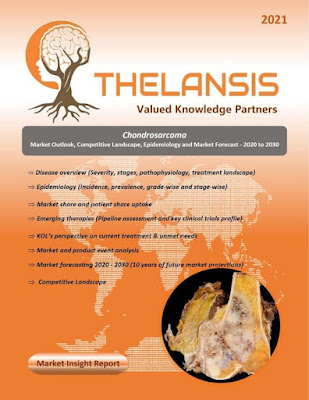Drug-Resistant Epilepsy (DRE) – Market Outlook, Epidemiology, Competitive Landscape, and Market Forecast Report – 2023 To 2033
Drug-Resistant Epilepsy (DRE) is associated with neuroinflammatory, autoimmune, and neurodegenerative processes. Immune, pathophysiological, biochemical, and psychological effects are all caused by neuroinflammation. Whether localized or systemic, uncontrolled inflammatory processes result in abnormal neural connections and hyperexcitable neural networks. Anti-epileptic drugs given as monotherapies or in combination fail to achieve sustained seizure freedom because inflammatory mediators affect the endothelium of cerebral vessels, destroy endothelial cell contacts, and induce abnormal angiogenesis, affecting the blood-brain barrier permeability. In 30% to 40% of patients, drug resistance develops, resulting in premature death and brain damage. Drug-resistant epilepsy (DRE) can affect patients of any age recently diagnosed with epilepsy. Patients with DRE have a lower quality of life (QOL), greater medical, social, and financial burden, and a higher mortality rate.
·
Epilepsy affects approximately 1.0% of the
world’s population. The prevalence and frequency of epilepsy are slightly
higher in men than women. The general prognosis of epilepsy is favorable for
the majority of patients, and 55–68% of them tend to achieve long-term
remission.
Thelansis’s
“Drug-Resistant Epilepsy (DRE) Market Outlook, Epidemiology, Competitive
Landscape, and Market Forecast Report – 2023 To 2033" covers disease
overview, epidemiology, drug utilization, prescription share analysis,
competitive landscape, clinical practice, regulatory landscape, patient share,
market uptake, market forecast, and key market insights under the potential Drug-Resistant
Epilepsy (DRE) treatment modalities options for eight major markets (USA,
Germany, France, Italy, Spain, UK, Japan, and China).
KOLs insights of Drug-Resistant
Epilepsy (DRE) across 8 MM market from the centre of Excellence/ Public/
Private hospitals participated in the study. Insights around current treatment
landscape, epidemiology, clinical characteristics, future treatment paradigm,
and Unmet needs.
Drug-Resistant
Epilepsy (DRE) Market Forecast Patient Based Forecast Model (MS.
Excel Based Automated Dashboard), which Data Inputs with sourcing, Market
Event, and Product Event, Country specific Forecast Model, Market uptake and
patient share uptake, Attribute Analysis, Analog Analysis, Disease burden, and
pricing scenario, Summary, and Insights.
Thelansis Competitive Intelligence (CI) practice
has been established based on a deep understanding of the pharma/biotech
business environment to provide an optimized support system to all levels of
the decision-making process. It enables business leaders in forward-thinking
and proactive decision-making. Thelansis supports scientific and commercial
teams in seamless CI support by creating an AI/ ML-based technology-driven
platform that manages the data flow from primary and secondary sources.
Tags: Drug-Resistant
Epilepsy (DRE), Drug-Resistant Epilepsy (DRE) market
outlook, Drug-Resistant Epilepsy (DRE) competitive
landscape, Drug-Resistant Epilepsy (DRE) market
forecast, Thelansis, Primary market research, KOL insights, Competitive
Intelligence (CI)



Comments
Post a Comment